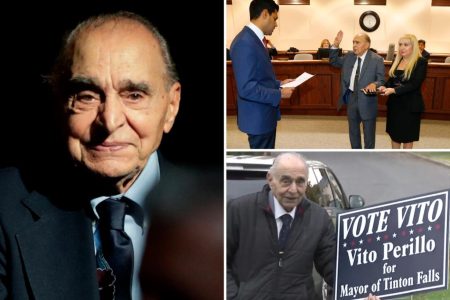The shocking murder of Brian Thompson, CEO of UnitedHealthcare, has taken a bewildering turn with the arrest of 26-year-old Luigi Mangione, a former Ivy League student with a puzzling online presence. The case has captivated the nation, prompting a flurry of speculation and investigation. The seemingly random nature of the crime, coupled with the suspect’s erratic social media activity, has created a complex and multifaceted narrative demanding deeper exploration. This summary delves into the known details of the case, exploring the suspect’s background, the victim’s circumstances, and the ongoing investigation, aiming to piece together the fragmented information available.
Mangione’s arrest unfolded in a dramatic fashion at a McDonald’s in Altoona, Pennsylvania. An alert employee recognized him from wanted posters, leading to his apprehension and subsequent arraignment on weapons charges. The arrest brought a sense of relief but also amplified the mystery surrounding the case. Mangione’s background as a former Ivy League student adds a layer of complexity, contrasting starkly with the violent act he’s accused of committing. His connection to a Discord gaming group, where members played the social deduction game “Among Us,” adds an eerie dimension to the narrative. One fellow gamer, Alejandro Romero, expressed his shock and disbelief, remarking on the irony of a real-life “killer among us” emerging from their virtual world. This detail, while seemingly trivial, underscores the strange juxtaposition of online interactions and real-world consequences.
Romero’s recollections of Mangione paint a picture of an unremarkable college student, a “typical frat dude,” blending seamlessly into the campus social scene. Their connection faded after graduation, as is common with many post-college friendships. However, the reemergence of Mangione in such a dramatic context has forced Romero and others to re-examine their past interactions, searching for clues that might have foreshadowed this tragic event. The lack of any discernible red flags in Mangione’s college years further deepens the enigma surrounding his alleged involvement in Thompson’s murder. The contrast between the seemingly normal college student described by Romero and the individual accused of this violent crime adds to the bewilderment surrounding the case.
Mangione’s online persona presents a perplexing tapestry of conflicting political views and intellectual interests. His social media activity reveals a fascination with figures ranging from Aldous Huxley and Jonathan Haidt to Ted Kaczynski, the infamous Unabomber. His Goodreads account, a platform for book reviews, displays a particularly disturbing entry: a review of Kaczynski’s “Unabomber Manifesto.” He even shared a quote from the manifesto expressing Kaczynski’s cynical view of a society that creates unhappiness and then provides drugs to alleviate it. This online activity, while not explicitly indicative of violent tendencies, raises significant questions about Mangione’s worldview and potential motivations. The seemingly random assortment of intellectual influences further complicates the task of understanding his mindset.
The victim, Brian Thompson, had a distinguished career as the CEO of UnitedHealthcare, a prominent figure in the healthcare industry. He joined the company in 2004 and ascended to the role of CEO in April 2021. Tragically, his life was cut short in what police describe as a “brazen, targeted attack” outside a luxury Midtown hotel. The circumstances surrounding his death have fueled speculation and intensified the investigation. Adding another layer of complexity to the case is the revelation that Thompson had been receiving threats prior to his murder, according to his wife, Paulette. This information raises crucial questions about the nature of these threats and whether they are connected to Mangione.
The aftermath of Thompson’s murder has been marked by an outpouring of grief and support, but also by disturbing online reactions. The emergence of a tasteless lookalike competition in New York City highlights the unsettling intersection of tragedy and social media sensationalism. This morbid phenomenon underscores the potential for online platforms to amplify both empathy and insensitivity in the wake of such events. The investigation into Thompson’s murder continues, with authorities working to establish a definitive link between the victim and the suspect. The focus remains on uncovering the motive behind the attack and determining whether Mangione acted alone or as part of a larger conspiracy.
The convergence of these disparate elements – Mangione’s enigmatic online presence, his seemingly ordinary college life, the victim’s high-profile position, and the disturbing online reactions to the tragedy – creates a complex and challenging narrative. As the investigation unfolds, the hope is that a clearer picture will emerge, shedding light on the motivations behind this senseless act of violence. The case serves as a stark reminder of the challenges of understanding human behavior and the unpredictable nature of violence in our society. The search for answers continues, as investigators piece together the fragments of information, striving to bring closure to this tragic chapter.










